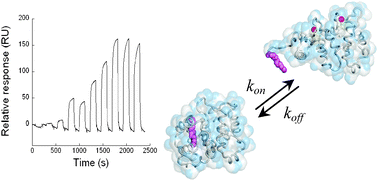Calcium plays a central role in many signalling pathways, including neuronal and sensory function. Now scientists in Germany have shown that surface plasmon resonance can be used to monitor Ca2+-induced conformational changes in a Ca2+-sensor protein immobilised on a chip.
Daniele Dell’Orco and colleagues at the University of Oldenburg, Germany describe their study in a recently published ChemComm communication. Download the article for free until 25th October.
You can submit your own high impact research to ChemComm using our online submission system.











